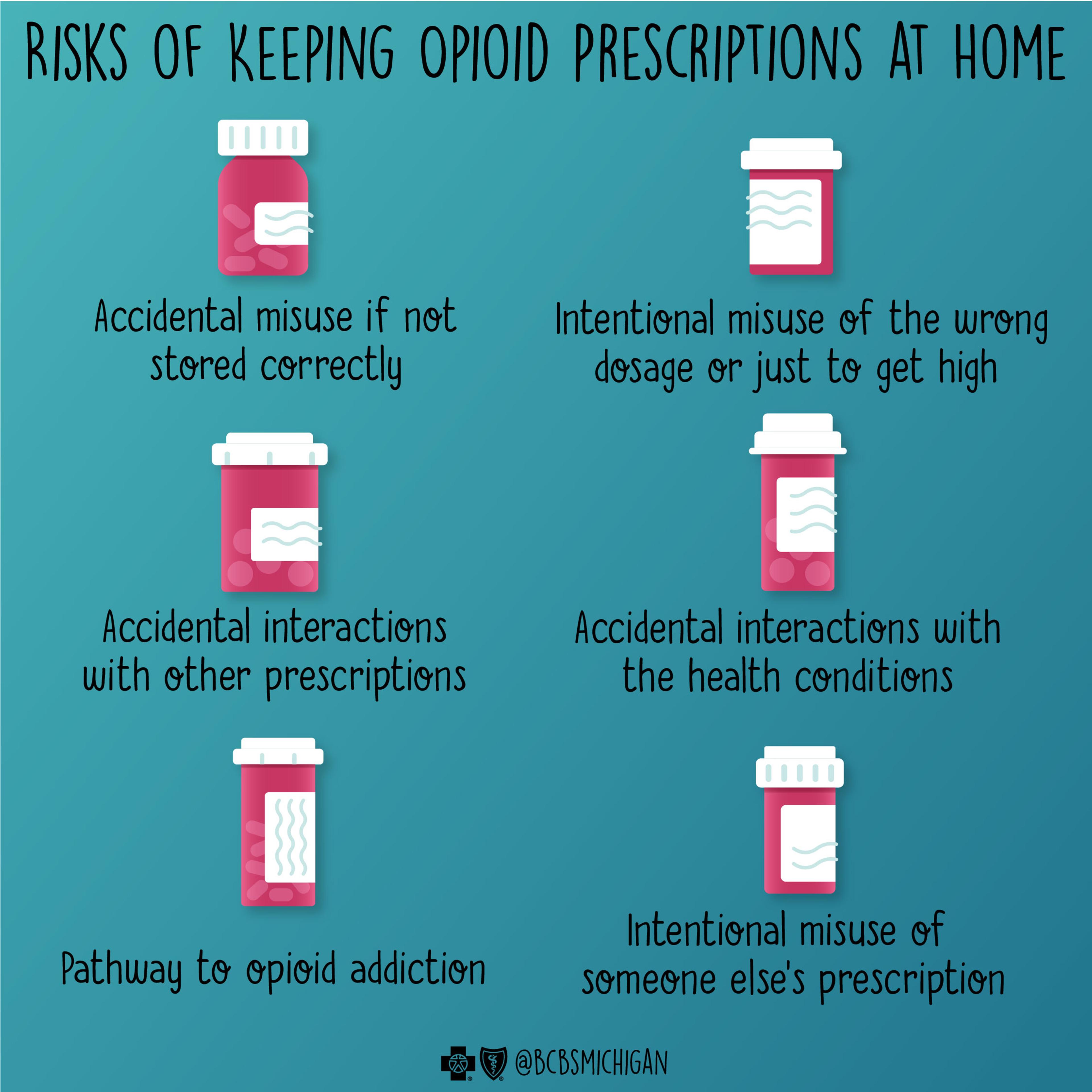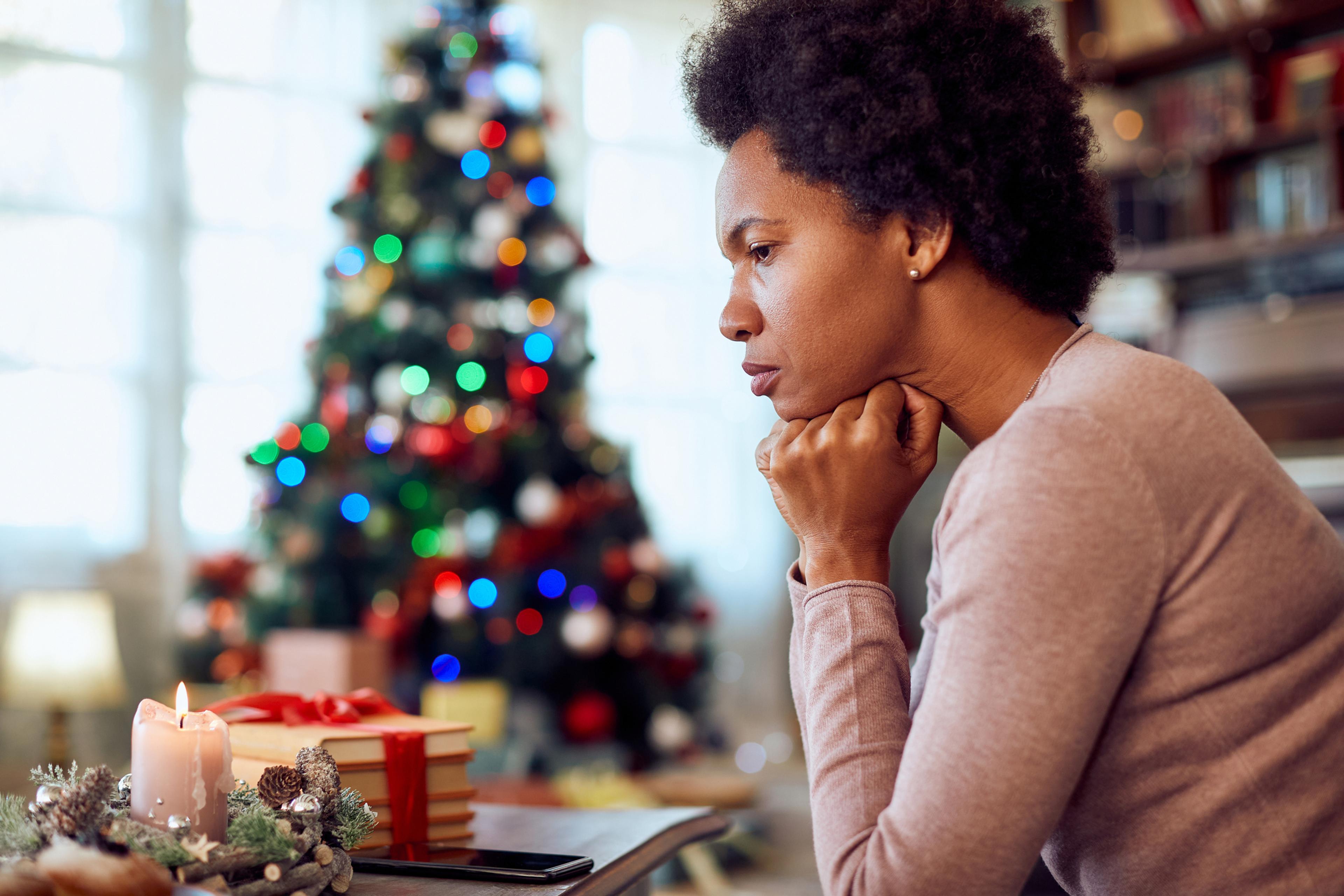The Risks of Keeping Opioid Prescriptions at Home

Dr. William Beecroft, M.D.
| 4 min read
Dr. William Beecroft, MD, DLFAPA, is the Medical Director Blue Cross and Blue Shield of Michigan Behavioral Health and Behavioral Health strategy and planning. Dr. Beecroft received his M.D. from Michigan State University. He is board certified in general psychiatry with added qualifications in geriatrics and Consultation-Liaison Psychiatry. He will serve as the Michigan Psychiatric Society President in 2025.

In 2020, 9.3 million Americans aged12 and older misused prescription pain relievers. Overall, drug-involved overdose deaths have been rising in the U.S., especially those involving the synthetic opioid fentanyl.
Everyone in the health care industry from health plans to providers to pharmacies have all made significant strides in working to combat the opioid epidemic by improving oversight, adding screenings and updating dispensing protocols. But preventing the misuse of prescription opioids is also important at home. Safely storing and disposing of prescriptions when they are no longer needed can ensure only the patient takes them and helps keep them out of the wrong hands.
Common prescription opioids
Opioids may be prescribed by doctors to help patients with their moderate to severe pain. Typically, they are prescribed in pill form. Here are some of the most common types:
- Codeine
- Fentanyl
- Hydrocodone (Vicodin)
- Morphine (Kadian, Avinza)
- Oxycodone (Oxycontin, Percocet)
Prescription opioids can provide great relief to patients when taken for a short time, under the direction of a health care provider. They also can have harmful, immediate side effects including:
- Confusion
- Constipation
- Drowsiness
- Nausea
- Slowed breathing
Call 911 immediately or go to the nearest emergency department if you suspect someone is having an adverse reaction after taking an opioid.

Misuse
Patients with multiple prescriptions and chronic diseases can be at risk of accidental opioid misuse as interactions with other drugs or conflicts with a patient’s condition could occur.
Prescription opioids also pose a great risk for intentional misuse. Due to the way opioids interact with the chemical receptors in the brain, prescription opioids are highly addictive. Individuals can misuse prescription opioids by taking a dose that’s not prescribed, using someone else’s prescription medication, or using the opioid just to get high.
Prescription opioid misuse also can include taking the medication in a way that’s not prescribed, including crushing pills or opening a capsule and using the powder to snort or dissolving it into water so it can be injected into a vein.
Warning signs of addiction
Too often, misuse of prescription opioids is a pathway to addiction for individuals that leads to a pattern of destructive and abusive behavior. It may be difficult to know at first if an individual is misusing opioids. However, there are some common signs of addiction to watch for:
- Changes in sleep habits
- Changes to exercise habits
- Uncontrollable cravings
- Decline in hygiene
- Decreased libido
- Drowsiness
- Frequent flu-like symptoms
- Inability to control opioid use
- Isolation from family, friends
- Planning and anticipating future use
- Stealing from those close to them
- Sudden or new financial problems
- Weight loss
Health care professionals can help individuals who are misusing prescription and/or illicit opioids. Treatments for opioid use disorder are available from providers, and recovery is possible. Individuals who need help can start by talking with a primary care provider about their concerns.
Safe storage and disposal
Having prescription opioids at home can be done safely if they are stored correctly and then promptly disposed of once a patient is finished taking them under a health care provider’s treatment plan.
Here are some safe storage tips for prescription opioids:
- Keep the medication in its original package
- Store them in a safe place and if possible, in a locked container or area
- Keep them out of reach of children
- Don’t share medication, even with family members
Here’s how to safely dispose of prescription opioids:
- Utilize community pharmaceutical take-back programs available in your area available year-round, often at pharmacies or police departments.
- Participate in the next National Prescription Drug Take Back Day, Saturday, Oct. 29, 2022.
- Never flush prescriptions down the toilet unless the label gives specific instructions to do so.
- If an individual must throw their pills away, remove them from their original containers. Mix medications with a substance such as kitty litter or coffee and place them in a container that is impermeable and unidentifiable, such as empty cans or sealable bags. Place in the trash.
William Beecroft, M.D., D.L.F.A.P.A., is medical director of behavioral health at Blue Cross Blue Shield of Michigan.
More from MIBluesPerspectives:
- Common Opioids Prescribed for Pain
- Dispose of Unused Medications on Upcoming Drug Take Back Day
- How to Manage Medications for a Loved One
Photo credit: Getty Images





